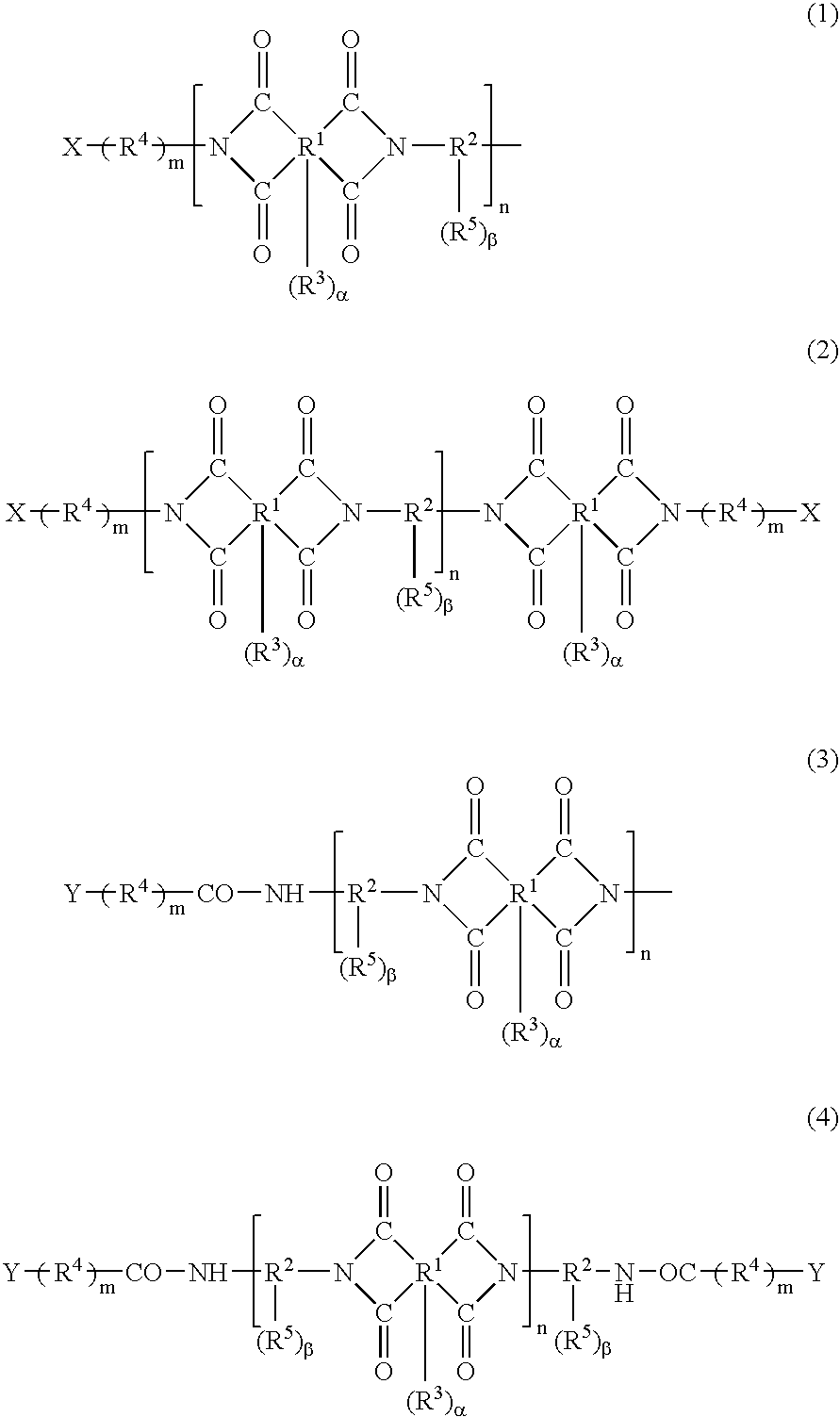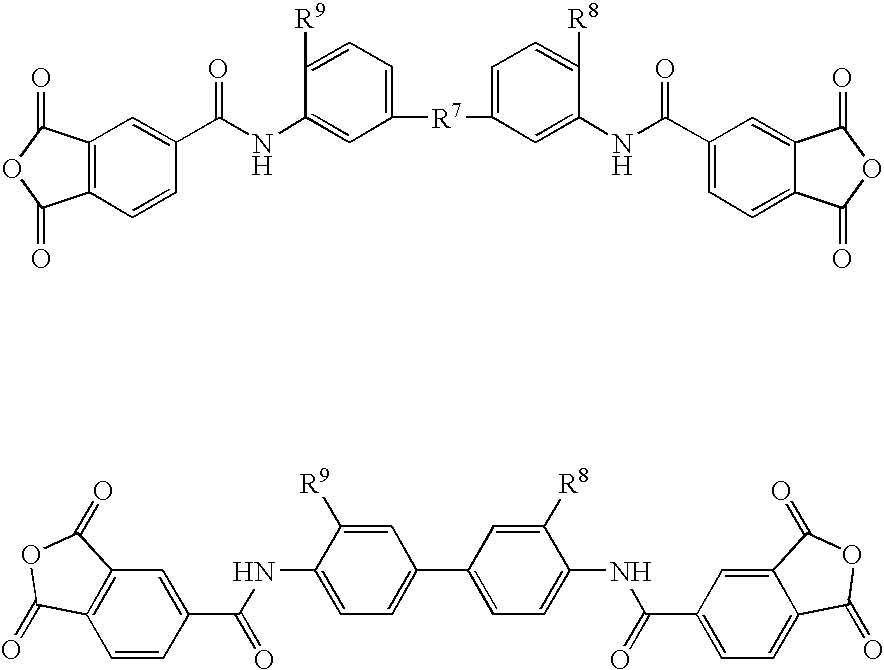Photosensitive resin composition, electronic component using the same, and display using same
a technology of photosensitive resin and electronic components, applied in the direction of light sources, electrical equipment, nuclear engineering, etc., can solve the problems of difficult pattern formation, poor solubility, complicated and extensive process of pattern formation on semiconductor integrated circuits or printed circuit boards, etc., to achieve good thermal insulation performance, excellent pattern formation, crack resistance, stress resistance
- Summary
- Abstract
- Description
- Claims
- Application Information
AI Technical Summary
Benefits of technology
Problems solved by technology
Method used
Image
Examples
synthetic example 1
Synthesis of Activated Ester Compound (I)
[0115] In a dry nitrogen gas stream, 18.5 g (0.1 mol) of 4-carboxybenzoic acid chloride and 13.5 g (0.1 mol) of hydroxybenzotriazole were dissolved in 100 g of tetrahydrofuran (THF), and the solution was cooled to −15° C. A solution of 10 g (0.1 mol) of triethylamine in 50 g of THF was added dropwise thereto, so that the temperature of the reaction solution did not exceed 0° C. After the dropwise addition, the mixture was allowed to react at 25° C. for 4 hours. The reaction solution was concentrated with a rotary evaporator to obtain an activated ester compound (I).
synthetic example 2
Synthesis of Hydroxyl-Group-Containing Acid Anhydride (II)
[0116] In a dry nitrogen gas stream, 18.3 g (0.05 mol) of 2,2-bis(3-amino-4-hydroxyphenyl)hexafluoropropane (BAHF) and 34.2 g (0.3 mol) of allyl glycidyl ether were dissolved in 100 g of gamma butyrolactone (GBL), and the resulting solution was cooled to −15° C. Subsequently, a solution of 22.1 g (0.11 mol) of trimellitic anhydride chloride in 50 g of GBL was added dropwise thereto, so that the temperature of the reaction solution did not exceed 0° C. After the dropwise addition, the mixture was allowed to react at 0° C. for 4 hours. The reaction solution was concentrated with a rotary evaporator, and the concentrated solution was added to 1 l of toluene to obtain the acid anhydride (II).
synthetic example 3
Synthesis of Hydroxyl-Group-Containing Diamine Compound (III)
[0117] BAHF (18.3 g, 0.05 mol) was dissolved in 100 ml of acetone and 17.4 g (0.3 mol) of propylene oxide, and the resulting solution was cooled to −15° C. Subsequently, a solution of 20.4 g (0.11 mol) of 4-nitrobenzoyl chloride in 100 ml of acetone was added dropwise thereto. After the dropwise addition, the mixture was allowed to react at −15° C. for 4 hours and the temperature of the mixture was then allowed to return to room temperature. White solid deposits were separated by filtration and were dried in vacuo at 50° C.
[0118] The solid (30 g) was placed in a 300 ml stainless-steel autoclave, dispersed in 250 ml of methyl cellosolve, and then blended with 2 g of 5% palladium-carbon. Hydrogen was introduced thereto by a balloon, and a reduction reaction was performed at room temperature. Approximately 2 hours thereafter, it was ensured that the balloon did not deflate any more, and the reaction was terminated. After th...
PUM
| Property | Measurement | Unit |
|---|---|---|
| Percent by mass | aaaaa | aaaaa |
| Electrical resistance | aaaaa | aaaaa |
| Photosensitivity | aaaaa | aaaaa |
Abstract
Description
Claims
Application Information
 Login to View More
Login to View More - R&D
- Intellectual Property
- Life Sciences
- Materials
- Tech Scout
- Unparalleled Data Quality
- Higher Quality Content
- 60% Fewer Hallucinations
Browse by: Latest US Patents, China's latest patents, Technical Efficacy Thesaurus, Application Domain, Technology Topic, Popular Technical Reports.
© 2025 PatSnap. All rights reserved.Legal|Privacy policy|Modern Slavery Act Transparency Statement|Sitemap|About US| Contact US: help@patsnap.com



